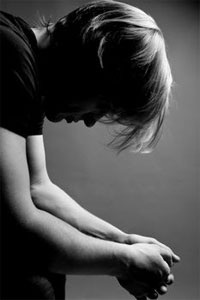Schizoaffective: Facts About This Rare Disease
 Schizoaffective Disorder is a rare mood disorder that many people have not heard of. Because of the similarity to Schizophrenia, it is often confused with it. Some experts, also because of the distinct similarities, think that Schizoaffective should not be treated as a distinct disorder, and that it should simply be regarded as Schizophrenia with mood symptoms. However, other experts, because of the fact that it also shares traits with Bipolar disorder and other manic depression disorders, argue that it should be defined as it's own disorder due to it's variety of symptoms and should be treated as such.
Schizoaffective Disorder is a rare mood disorder that many people have not heard of. Because of the similarity to Schizophrenia, it is often confused with it. Some experts, also because of the distinct similarities, think that Schizoaffective should not be treated as a distinct disorder, and that it should simply be regarded as Schizophrenia with mood symptoms. However, other experts, because of the fact that it also shares traits with Bipolar disorder and other manic depression disorders, argue that it should be defined as it's own disorder due to it's variety of symptoms and should be treated as such.
Symptoms
The symptoms listed below are episodes - they are explained - and those who suffer from Schizoaffective Disorder suffer from at least one of these, often for a month or longer.
Major Depressive Episode
Major Depressive Episode is often a symptom of Bipolar Disorder and Manic Depression. A major depressive episode is only confirmed when a person has a "depressed mood" and loss of interest and pleasure in daily activities consistently for at least a two week period. It is also characterized by having five or more of the following symptoms (note: the symptoms need not occur every single day, just nearly).
- Depressed most - if not all - of the time, by report or observation made by others
- Notable new lack of interest in most of/all daily activities for most/the entire day
- Significant weight loss/weight gain when not dieting. Also, a significant increase or decrease in appetite
- Insomnia, the disability to sleep, or hypersomnia, sleeping too much
- Psychomotor agitation, a series of unintentional and purposeless motions that stem from mental tension of an individual
- Fatigue
- Feelings of worthlessness or consistent, unnecessary guilt
- Lacking ability to think, concentrate, and decide
- Recurring thoughts of death, recurring suicidal ideation with/without a specific plan, or attempted suicide
Manic Episodes
A manic episode - another common Bipolar disorder symptom - is a period of time where an elevated, notably irritated mood occurs that lasts at least one week. In order for correct diagnosis, three or more of the following symptoms must be present/reoccurring:
- Inflated self-esteem
- The need for sleep decreased
- Increased talkative behavior, or pressures to keep talking
- Increased goal-directed activity
- Excessive increase in pleasurable activities that contain a high risk of negative activities
Mixed Episode
A Mixed Episode is diagnosed by meeting the criteria for both Major Depressive Episode and Manic Episode nearly every day for at least a week. For it to be correctly diagnosed as an episode, it must be severe enough to affect the daily life of the person suspected to have it. Ex: Impairment in social, educational, and other vital activities.
(NOTE: Mixed Episode and Manic Episode are only defined as symptoms of Schizoaffective Disorder when unexplainable by substance use/abuse - i.e., alcohol, drugs, medications and - are not related to any other medical condition that the person does or may have.)
The next symptoms listed are common among many disorders, especially Schizophrenia. Those who have Schizoaffective Disorder commonly suffer from at least two.
- Delusions: “a fixed false belief that is resistant to reason or confrontation with actual fact.”
- Hallucinations: “a sensory experience of something that does not exist outside the mind”
- Disorganized speech, or frequent derailment or incoherence
- Grossly disorganized or catatonic behavior; catatonic: “muscular rigidity and mental stupor, sometimes alternating with great excitement and confusion.”
The Four Negative Symptoms
The four negative symptoms are four symptoms that are commonly related to mental disorders, especially Schizophrenia. However, Schizoaffective Disorder only has three, therefore only those three will be listed.
- Alogia: “inability to speak”
- Avolition: “general lack of desire, drive, or motivation to pursue meaningful goals”
- Affective Flattening: “a decrease in, or a low level of, emotion.
Causes
The causes of Schizoaffective Disorder, like Schizophrenia, are currently unproved, but theorized. It has been found that the disorder has distinct genetic links, and therefore is passed on in the family line; a lot of people, me included, have mental disorders that seem to “run in the family.” Some experts believe that the actual cause of Schizoaffective Disorder is a chemical imbalance in the brain involving serotonin and dopamine - neurotransmitters that help regulate the mood. However, other experts are researching whether or not fetal exposure to toxins or viral illness, and even birth complications are the cause.
Diagnosis
When diagnosing this specific disorder, there are two types of Schizoaffective Disorder that a person can have: bipolar and depressive. The bipolar type is founded when a person exhibits symptoms of both mania and depression - i.e., Mixed Episodes. The depressive type is diagnosed when a person only has depressive symptoms.
The diagnosis process of Schizoaffective Disorder begins with an in-depth interview with a doctor. If and when the doctor in question notices psychiatric symptoms, he or she will go into questions about medical, psychiatric, and social history. They will also ask about symptoms you believe you have and your emotional well-being. A physical examination, such as blood tests and toxic screenings, are used to rule out any physical disease or substance abuse. It is likely that a mental health professional will be consulted.
A doctor must be able to recognize the wide variety of symptoms that come along with Schizoaffective Disorder. Because of this, when suspecting Schizoaffective Disorder, a patient may be asked to stay in the hospital for observation and analysis, along with tests and screenings. Doctors often question close friends and relatives to determine other symptoms, or the accuracy of the symptoms the patient is believed to have.
Treatment
Of course the most common treatment for anything is medication, and Schizoaffective Disorder is no exception. The following are a list of medication types that are used when one is diagnosed with Schizoaffective Disorder:
- Antipsychotics, or neuroleptics are prescribed to lessen psychotic symptoms: delusions, paranoia, hallucinations, etc. Three neuroleptics are Clozaril (clozapine), Risperdal (risperidone), and Zyprexa (olanzapine).
- Mood-stabilizers are prescribed when the type is defined as bipolar. This medicine levels out the highs and lows of the bipolar type symptoms. As you may have already guessed, it is also widely used as a treatment for Bipolar disorder itself. Types of mood-stabilizers include Eskalith, Lithobid (both lithium), and Depakote (divalproex).
- Antidepressants are used when it is the depressive type. They alleviate feelings of sadness, hopelessness, and also help with difficulty to sleep and concentrate. The common medications defined as antidepressants include Celexa (citalopram), Prozac (fluoxetine), and Lexapro (escitilopram).
There are also non-medicine therapeutic treatments for Schizoaffective Disorder. In most cases, therapy is required long-term for those with the disorder.
Psychotherapy and counseling are common for Schizoaffective sufferers. In counseling and psychotherapy you build a trusting relationship. Oftentimes, this leads to a better understanding about their condition which in due course leads to being able to go on through your life with hope, instead of doubt and misunderstanding. Sessions usually focus on life plans, problems the patient may be having and relationships. It is common for new skills and behaviors to be introduced for places like work, home, and social areas.
Family or group therapy is extremely beneficial to those with Schizoaffective Disorder. That is because they are able to discuss their own problems in their life caused by the illness to people who understand and relate to other things other patients are going through as well. The “family” setting is also helpful when learning to develop social skills, alleviate social isolation, and provide a “reality check” in times when the patient suffers psychosis.
INVEGA(R)
On July 31st, INVEGA(R) (paliperidone) was approved by the FDA as the first and only antipsychotic for the acute treatment for Schizoaffective Disorder. The approval was confirmed after two international, randomized, double-blind, placebo-controlled studies of patients with an established diagnosis of schizoaffective disorder, who were experiencing acute symptoms. In the first 6 week study, patients received flexible doses of INVEGA(R) (3-12 mg once daily). In the second study, patients were given one of two dose levels of INVEGA(R): 6 mg with the option to reduce to 3 mg, or 12 mg with the option to reduce to 9 mg. Using the positive and negative symptoms scale (PANSS), the efficiency of the medication was evaluated.
The INVEGA(R) group dosed between 3 and 12 mg/day, mean modal dose of 8.6 mg/day and the higher dose group (12 mg/day with option to reduce to 9 mg/day) were each superior to placebo in the PANSS. Improvements in mood symptoms were also observed, as measured by the HAM-D-21 and YMRS. In the lower dose group of 6 mg/day with option to reduce to 3 mg/day, INVEGA(R) was not significantly different from placebo as measured by the PANSS.
"Schizoaffective disorder is a chronic, disabling condition", said Husseini Manji, M.D., F.R.C.P.C., Global Therapeutic Area Head, Neuroscience, Johnson & Johnson Pharmaceutical Research & Development. "This new indication for INVEGA(R) further demonstrates Janssen's commitment to helping people with serious mental illnesses."
For more information, visit INVEGA.com.
Schizoaffective Disorder is a real medical condition that people are suffering through every day. If you or anyone you know are suspected of having Schizoaffective Disorder and are looking for a dual-diagnosis program specializing in schizoaffective disorder treatments, call Lakeview Health Systems now at 1-800-231-2950. All calls are completely confidential and staff is available to assist you 24 hours a day.
Sources:
bipolar.about.com
psychcentral.com
mayoclinic.com
dual-diagnosis-treatment-center.com
news.prnewswire.com
Latest articles
-

Endometriosis
October 14th, 2017 at 04:39pm
-

How to Fit Healthy Choices Into a Busy Day
September 25th, 2016 at 06:43am
-

Evaluation of Local and Non-Local Food Product Sellers
August 29th, 2016 at 04:09am
-

McDonald's or Good Health?
May 22nd, 2014 at 03:37pm
-

Convergence Insufficiency
May 12th, 2014 at 10:38am
